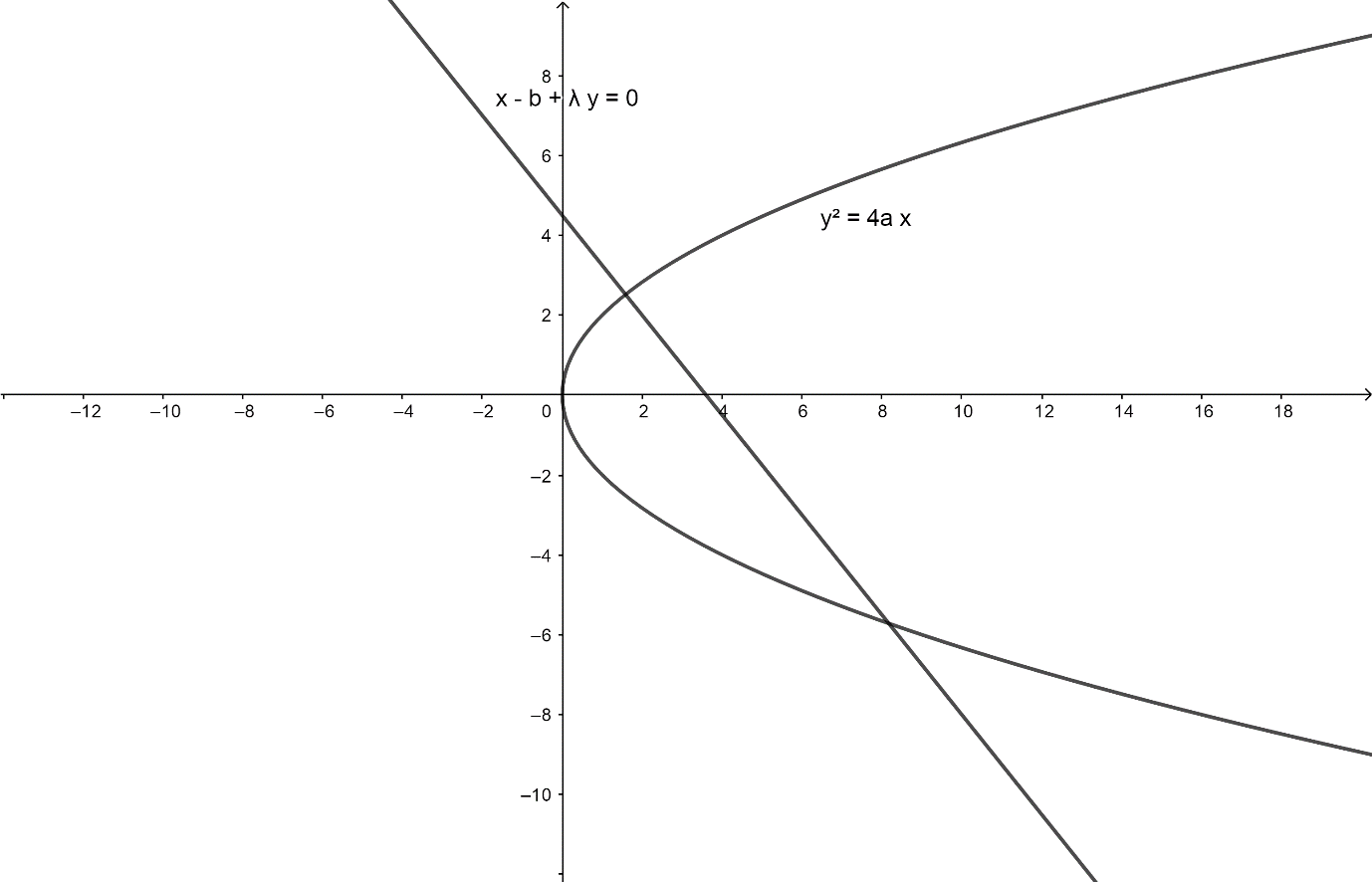Question
Question: The line \[x - b + \lambda y = 0\] cuts a parabola \[{y^2} = 4ax\]at \[P(a{t_1}^2,2a{t_1})\] and\[Q(...
The line x−b+λy=0 cuts a parabola y2=4axat P(at12,2at1) andQ(at22,2at2). If b∈[2a,4a] andλ∈ℜ, then t1t2 belongs to
A) [−4,−2]
B) [−4,−3]
C) [−3,−2]
D) None of these
Solution
Here we are going to consider a point in the parabola and substitute it in the given line and form a quadratic equation from it and using the relation between roots and coefficient we will find the required range.
Formula used:
Any point on a parabola of equation y2=4axcan be taken as(at2,2at).
Let us consider, α,β be two roots of a quadratic equationax2+bx+c=0, then from the relation between roots and coefficient we get, α+β=a−b andαβ=ac.
Complete step by step solution:
The diagrammatic representation of given equations is,

It is given that, the line x−b+λy=0 cuts a parabola y2=4axat P(at12,2at1) andQ(at22,2at2).
It is given also that, b∈[2a,4a] andλ∈ℜ.
Now, we have to find out the range oft1t2.
We know that, the any point on a parabola y2=4axcan be taken as (at2,2at)
Since, the line x−b+λy=0 cuts a parabola y2=4axat (at2,2at)
Let us substitute x=at2y=2at in the equation of the line we get,
at2−b+λ(2at)=0
Let us rearrange the expression and mark it as equation (1) we get,
at2+λ(2at)−b=0… (1)
Since, the line x−b+λy=0 cuts a parabola y2=4axat P(at12,2at1) andQ(at22,2at2), t1&t2 be the roots of the above equation (1).
Hence, by the relation between roots and coefficient given in the hint we get,
t1t2=a−b
Also it is given that, the range of b is [2a,4a] which means that b lies between 2a and 4a,
That is 2a≤b≤4a
Let us divide the above inequality by a we get,
2≤ab≤4
Also let us multiply −1 with each element in the inequality we get,
−4≤a−b≤−2
We initially have that, t1t2=a−b
So the above inequality becomes −4≤t1t2≤−2
So, the range of t1t2 is [−4,−2]
Hence t1t2∈[−4,−2].
∴The correct option is (A) [−4,−2]
Note:
Let us consider, x be a real number in the range[a,b], so the range of −x is[−b,−a].
If the negative sign will be added, the range will be interchanged.
In other words, the inequality changes when it is multiplied by -1, that is if inequality is multiplied by -1 if there is greater than then it is changed to less than and vice versa.
